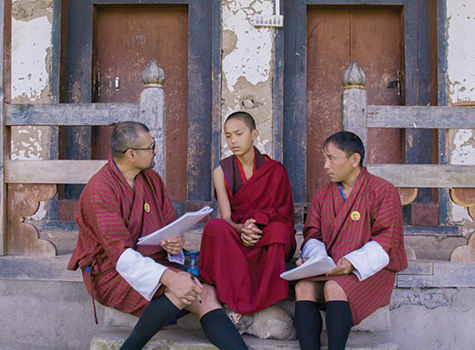Situated on the northeastern region of India, Manipur presents a beautiful picture of nature and charm. The word “Manipur” is derived from the words “Mani” a jewel and “pur” a place. This is a very graceful and spiritual dance form and is not seen very often. For centuries, people of Manipur have expressed their emotions and faith through dance and music. This dance is counted among major classical dance forms of India, especially noted for themes based on Vaishnavism and spectacular execution of “Ras Lila,” dance dramas based on the love between Radha and Krishna. Other themes included in this art form associate with Shaktism, Shaivism and on the sylvan deities called Umang Lai during Manipuri festival “Lai Haraoba.”
Historic changes
Traditionally the Manipuri people consider themselves to be the “’Gandharvas” mentioned in the Vedic texts who were singers, dancers and musicians associated with devas or the deities. The region is also mentioned as “Gandharva-desa” in ancient Manipuri texts.
Although texts of ancient Manipur gradually fizzled out, the oral tradition of Manipuri, records tracing back to the early 18th century, have references about the place in Asian manuscripts and archaeological findings speak volumes about the art.
As mentioned many times before, British colonial rule in the 19th century saw decline of various Indian classical dance forms which were subjected to contemptuous fun and discouragement. Manipur was annexed by the British colonial government in 1891, and with this the flourishing period of Manipuri dance art came under the clutch of colonial rule like other ancient Indian classical dance forms. The Manipuri dancers somehow survived in the temples of the region like the Govindji temple of Imphal.
The Christian missionaries launched anti-dance movement in 1892 and later the Madras Presidency under the British colonial government banned the custom of dancing in Hindu temples in 1910. The Indian community disapproved such ban and as the Indian freedom movement progressed steadily during the early 20th century, an effort to revive Indian culture and tradition became strong among Indians. Many classical art revivalists joined hands between 1920 and 1950 in reviving the different ancient classical dance forms.
Influence of Rabindranath Tagore
Rabindranath Tagore, an Indian Bengali polymath and the first non-European who won the Nobel Prize in Literature in 1913, is revered for his outstanding contribution in the field of Bengali literature and music. He rekindled the Manipuri dance art in a new way. Tagore was so fascinated by the performance of the dance composition of “Goshtha Lila” in Sylhet (now in Bangladesh) in 1919 that he offered Guru Budhimantra Singh, an ace Manipuri dancer, to join the faculty of Shantiniketan, an Indian cultural and study center. Many of Tagore’s dance-dramas were given shape with choreography of other imminent Gurus who were offered to join the center.
Dance style
The traditional style of this art form incorporates graceful, gentle and lyrical movements. The fundamental dance movement of Ras dances of Manipur is Chari or Chali. Manipuri dances are performed thrice in autumn from August to November and once in spring sometime around March-April, all on full moon nights. While Vasant Ras is scheduled in spring when Holi, the festival of colors is celebrated by the Hindus, the other dances are scheduled around post-harvest festivals like Diwali.
Themes of the songs and plays comprise of love and association of Radha and Krishna. One composition and dance sequence is dedicated for each of the Gopis/milkmaids while the longest sequence is emphasized on Radha and Krishna. The dance drama is performed through excellent display of expressions, hand gestures and body language. Acrobatic and vigorous dance movements are also displayed by Manipuri dancers in many other plays.
Costumes & Musicians
The costumes for Manipuri dancers, particularly for women are quite unique from other Indian classical dance forms. A male dancer wears a bright colored dhoti, also referred as dhora or dhotra that covers lower part of his body from waist. A crown decorated with peacock feather adorns the dancer’s head, who portrays the character of Lord Krishna.
The costume of female dancers resembles that of a Manipuri bride, referred as Potloi costumes. The most distinguished of these is the Kumil costume that is an exquisitely embellished long skirt in the shape of a barrel with a stiffened bottom. The top border of Kumil adorns a wavy and translucent fine skirt tied in three places around the waist in Trikasta and opens up like a flower. A velvet choli or blouse adorns the upper part of the body and a translucent veil white in color covers the head. The dancer wears round-shaped jewelry or garlands of flowers to adorn her face, hand, neck, waist and legs that synchronize well with her costume. Unlike other Indian classical dance forms, a Manipuri dancer does not wear a ghunghroo or bells.
The drummers who also dance while drumming are male artists. The musical instrument generally used in this art form includes the Pung that is a barrel drum, cymbals or kartals, harmonium, flute, pena and sembong. Accompanists include a singer.
Through the years, the classical dance form Manipuri has retained its heavenly beauty and rich content. This dance lives through its people as a vital part of their social, religious and spiritual existence. Their deep religious faith and strict discipline in dancing has contributed to the continuation and retention of such purity in this style. I hope more people will promote this beautiful dance form here in the USA.
Posted: Monday, July 10, 2017



